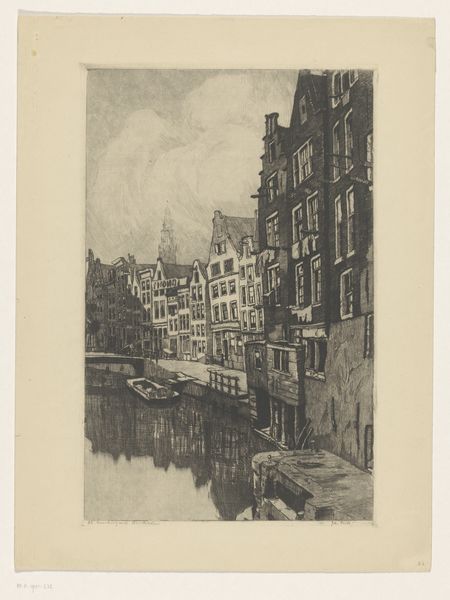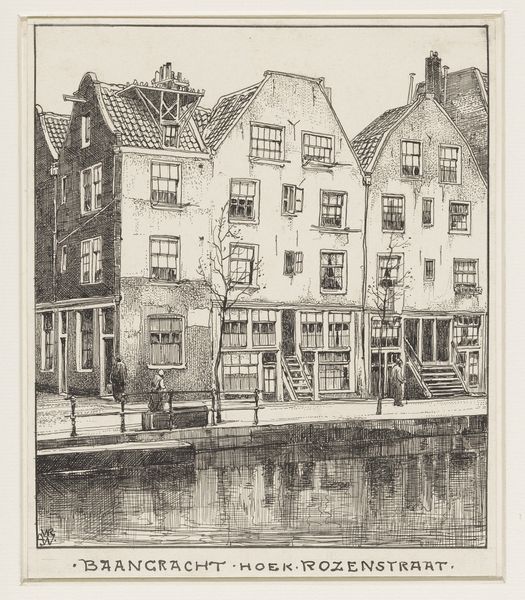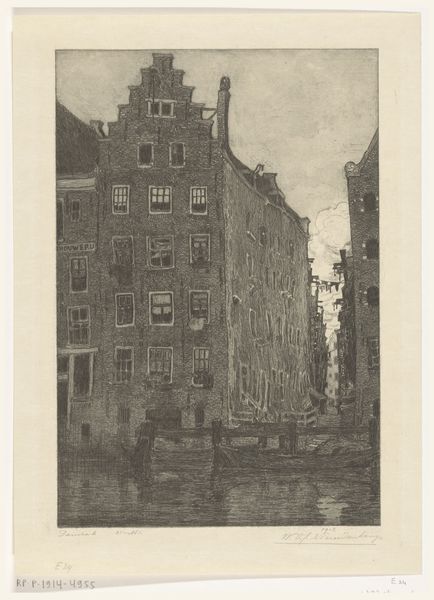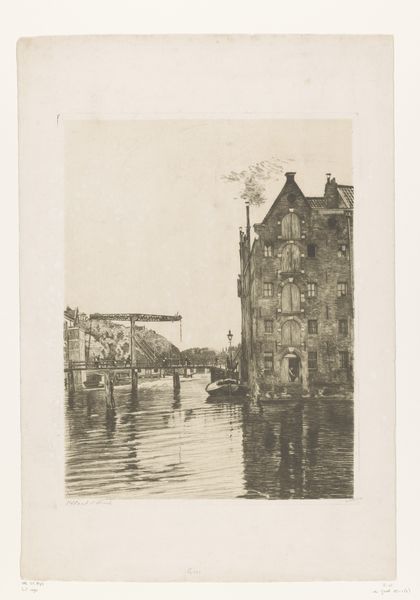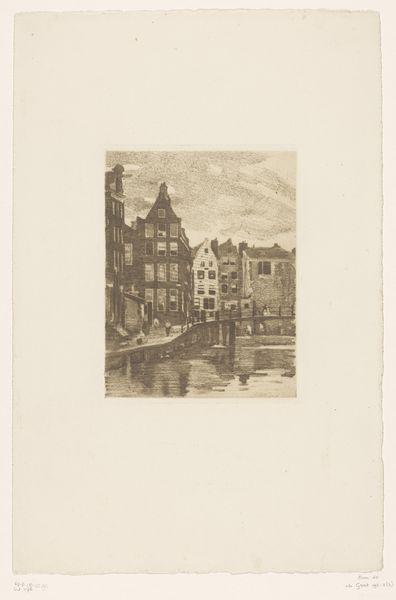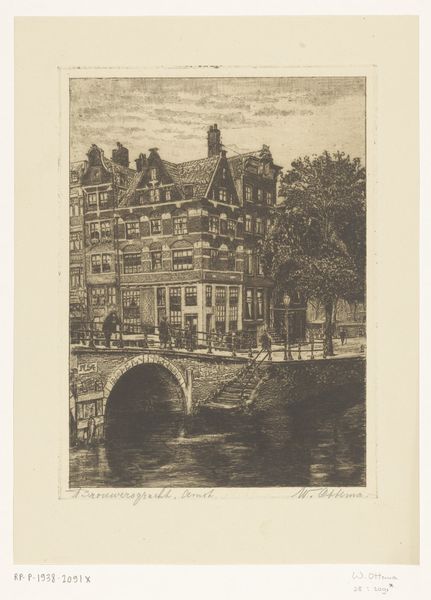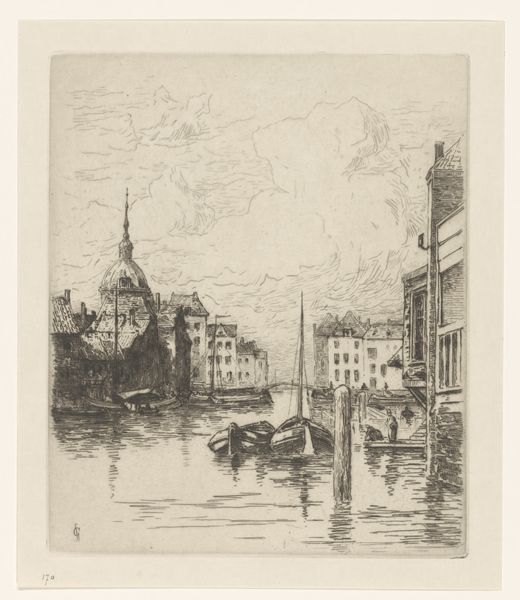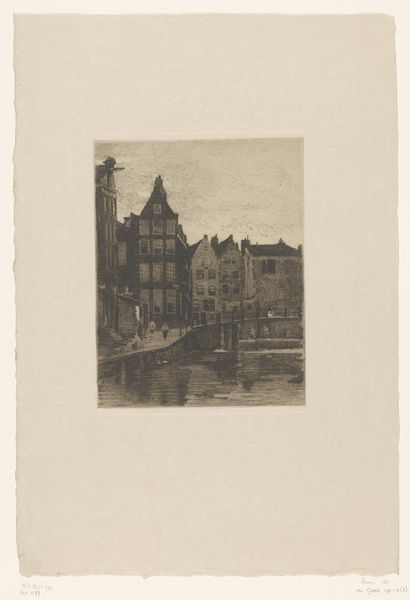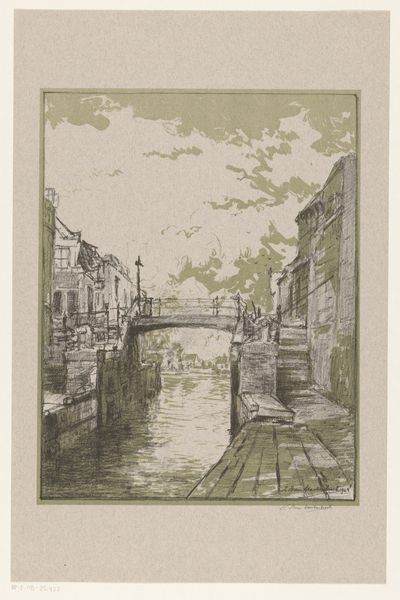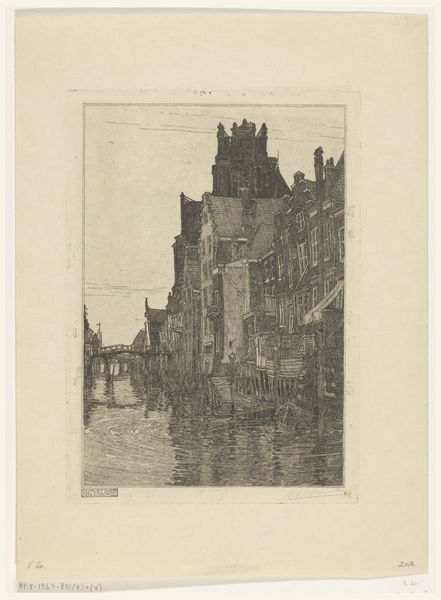
drawing, print, etching, paper, ink
#
drawing
#
dutch-golden-age
# print
#
etching
#
landscape
#
paper
#
ink
#
cityscape
#
street
#
realism
Dimensions: height 186 mm, width 138 mm
Copyright: Rijks Museum: Open Domain
Editor: So, here we have Willem Wenckebach's "De Grimburgwal te Amsterdam," an etching done sometime between 1870 and 1926. It feels almost photorealistic, like a memory captured in meticulous detail. The reflections in the water are mesmerizing! What stands out to you in this piece? Curator: It whispers stories to me, you know? This isn't just a cityscape; it’s a conversation with the past. See how the artist uses those stark lines to define the buildings, yet the water... ah, the water is a blurry, dreamy contrast. Wenckebach isn’t just showing us the Grimburgwal, he's inviting us to *feel* it. I wonder, do you get a sense of the city's pulse, or do you feel more of its stillness? Editor: I think I feel both, like a heartbeat slowing down as you gaze at it longer. But what about the historical context? How does it relate to other art of its time? Curator: That’s a keen question. While firmly rooted in Realism, there's a poetic sensibility present that reminds me of the Dutch Golden Age masters. They, too, found the extraordinary in the everyday. The magic is how Wenckebach modernizes that approach through printmaking, accessible art for a wider audience. What if Vermeer had an etching press, you know? Something almost democratic about it. Editor: So, he's making a statement simply by choosing this subject matter and this medium? Curator: Precisely! He’s saying, "Look! Beauty is here, in the canals, the bricks, the daily lives unfolding by the water’s edge." And in doing so, perhaps nudging us to look at our own surroundings with fresh eyes. Did this insight reshape your initial response at all? Editor: Definitely. It makes me appreciate the everyday scenes around me in a different light, and value the different perspective it brought, using an accesible print form to achieve that. Curator: Right? And that, my friend, is the enduring magic of art – a constant reshaping of perspectives.
Comments
No comments
Be the first to comment and join the conversation on the ultimate creative platform.
